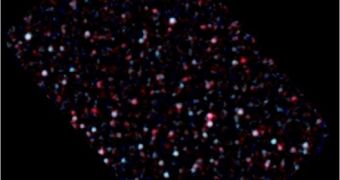Scientists operating the Herschel Space Telescope have recently announced that they managed to identify some of the sources associated with the CIB (Cosmic Infrared Background) that the observatory detected a while back. The weak field surrounds the Earth from all directions, and experts believe that it may hold yet-undeciphered clues about the origins and evolutions of galaxies. According to German astrophysicists, more than half of the constituting sources for the CIB have now been individually resolved, and more are currently being analyzed, ScienceDaily reports.
In charge of the new studies have been experts from the Max Planck Institute for Extraterrestrial Physics, who used the PACS (Photodetecting Array Camera and Spectrometer) instrument to make these observations. The CIB was first discovered by NASA's COBE spacecraft, which showed experts that the field reached our planet with the same intensity from all directions. The observatory also determined that the field was essentially a faint radiation in the far-infrared part of the electromagnetic spectrum. Now, with the super-advanced capabilities that Herschel has, observing the CIB has become easier to do.
The PACS is especially designed to not only observe the infrared wavelengths coming in from star-forming regions in dust cloud-enveloped galaxies, but also to analyze the skies in search of much fainter IR sources, such as cool stars. The instrument relies on Herschel's 3.5-meter mirror to snap high-resolution photos of the sky in the far-IR spectrum, in wavelengths ranging from 70 to 160 micrometers. “After the check-out of our instrument, we were yearning to obtain the first deep far-infrared observations of the sky,” PACS principal investigator Albrecht Poglitsch reveals.
“Already in these first observations, we have resolved about 60% of the cosmic infrared background from this region of sky into individual well-detected sources. And this is just the beginning. Yet more sensitive observations will follow soon, and we will be able to understand in detail the epoch of activity and the properties of the galaxies that produce the cosmic infrared background, now that we have pinned them down,” Dieter Lutz adds. The expert works for the five European institute-consortium that was in charge of retrieving and analyzing the PACS data.

 14 DAY TRIAL //
14 DAY TRIAL //